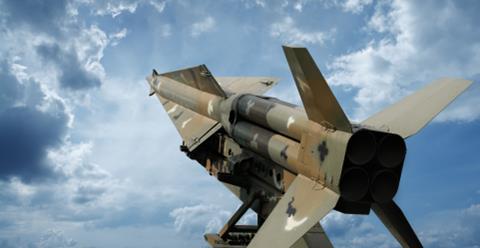Geopolitical risks continue to be an increasing threat to business and risk managers need to put in place systems that allow them to identify those risks, before it’s too late
The Institute of Risk Management’s (IRM) Energy & Renewables Special Interest Group has warned risk managers that political risks are a growing threat to the operations of energy firms and also the broader business community.
The group has held an energy risks clinic with geopolitical risks at the top of the agenda amid a number of emerging and continuing threats to businesses

Its founder, Alexander Larsen, who is also a risk manager, told Strategic Risk that while the group has been engaging with energy risk managers the advice they have provided is applicable across all business sectors.
The group is warning that geopolitical risks are intensifying and as such they needed to adopt a clear approach as to how they can best identify and deal with these threats at a very early stage.
Top risk threats
The IRM special interest group has identified its top five risk threats for 2024.
- The first is geopolitical concerns particularly in the Middle East where any escalation may put further pressure on energy supply and pricing.
- Second is Asian geopolitical and macroeconomic shifts, with the case of Evergrande an example of the potential issues around ability for some to repay debt.
- Third is the political effects on global supply chains and the potential impact on energy companies of the continued drive towards electrification.
- Fourth is the ongoing changes in the European energy market with supply issues continuing to drive policy decisions.
- Fifth is backsliding in the drive for renewable energy and future sustainability.
It highlighted all have political risks involved.
Larsen told the clinic: “In the next two decades, competition for global influence is likely to reach its highest level since the Cold War, according to the US National Intelligence Council’s Global Trends 2040 report.
“This more competitive environment with rapidly evolving technologies will be more volatile with an increased risk of conflict, at least until states establish new rules, norms and boundaries for the most aggressive areas of competition.”
He added: “The new power dynamics are likely to produce a more volatile and confrontational geopolitical environment, reshape multilateralism, and widen the gap between transnational challenges and cooperative arrangements to address them.”
Larsen highlighted the fallout for the energy markets from the war in Ukraine.
“The war had a direct effect on Europe with a reduction in the supply of gas,” he explained. “In an effort to maintain power supplies we have seen some countries looking to return to the use of coal powered plants which has put efforts to increase renewable energy generation under pressure.”
How to tackle geopolitical threats
Dr Mykhailo Rushkovskyi, Manager, enterprise risk management at Qatar Chemical Company, was part of the clinic and said businesses needed to have a top down approach when it came to how it looked to manage the impact of geopolitical risk on its operations.
“Usually, most risks are identified through a bottom-up approach,” he explained. “Geopolitical risk management can be complemented with a top-down perspective to incorporate leadership viewpoint into the risk profile”.
“Instead of creating an additional process for geopolitical risk management, which could potentially increase the workload for participants, the new process should be integrated as an add-on to the existing risk management process. This will ensure a seamless transition and efficient utilisation of resources.”
“There is a real need for companies to ensure they have systems in place that will allow them to identify trends and risks which are over the horizon.”
However, he cautioned that any strategy need to be tailored and relevant for the business.
“Any geopolitical risk management must be tailored to align with the specific business context of the company,” he continued. “This will ensure that the identified risks are pertinent, and the mitigation strategies are effective in safeguarding the company’s interests.”
Larsen added: “There is a real need for companies to ensure they have systems in place that will allow them to identify trends and risks which are over the horizon. If they are able to identify trends and risks early, then it can be used to adapt and shape their future risk management strategy and has the potential for these trends and risks to be turned into opportunities.
“Risk managers need to ensure they are taking a broader view when it comes to political risks and ask themselves how these risks could or would affect their operations.
“If risk managers are able to identify trends and risks early, then it can be used to adapt and shape their future risk management strategy”
“For instance, the geopolitical situation in the Middle East has seen attacks in vessels in the Red Sea and the impact of transits via the Suez Canal, putting pressure on the global supply chain. We are also in the run up to the US presidential election, and there is potential for geopolitical risks to arise should Donald Trump become president.
“By this I mean he may decide to undertake a trade war with China, banning imports and exports and US businesses to trade or work with businesses which also trade with Chinese companies.
“The impact of the UK’s withdrawal from the European Union, created new geopolitical risks for businesses in the UK and Europe but those risks were very different depending on geographically where your businesses is headquartered.”
Larsen concluded: “Geopolitical risks continue to be an increasing threat to business and risk managers need to put in place systems that allow them to identify those risks.”














No comments yet